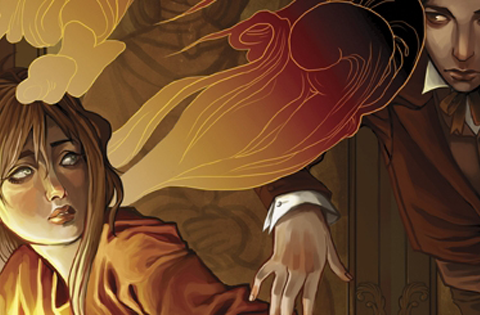| |
| |
Nov 21, 2024
|
|
|
|
|
2012-2013 University Catalog [Archived Catalogue]
Illustration, Bachelor of Fine Arts
|
|
Programs > Programs in the College of Art, Media, & Design
Contacts Description Learning Objectives Program Requirements

Quick Links
College of Art, Media & Design
CAMD Cross-College
Liberal Arts Distribution
Contacts
Mark Tocchet \ mtocchet@uarts.edu \ 215.717.6240
Program Director
Description
The Illustration curriculum is a blend of drawing, painting, figure modeling, picture making, illustration, visual problem solving, digital experiences, self-discovery through mentor-student relationship, history of pictorial image making, and graphic and Web design courses. Some courses are geared to developing basic, generic skills and others more focused toward professional application. Pedagogical emphasis is on discovering and developing the artist within the illustrator and his/her unique point of view. When artists find their unique expression, they can take advantage of all the outlets of their work. Courses will prepare the individual student for life in the arts and the flexibility to enter diverse areas in the applied graphic arts.
Learning Objectives
Students graduating with a Bachelor of Fine Arts in Illustration will:
- Demonstrate knowledge of figure study and picture making, along with traditional and digital technical skill development, leading to successful image making as it relates to the multi-faceted and ever-changing illustration industry;
- Demonstrate self-discovery through visual communication leading to point of view:
- Acquire critical drawing and thinking skills;
- Conceptual visual problem solving (developing intellectual curiosity, in connection with LA studies) leading to successful visual communication;
- Discovering/developing point of view (critical thinking, critical visual thinking, and effectively combining content and technique in a unique expression).
- Demonstrate an understanding the unique aesthetic of the illustrator as designer and the development of knowledge and skills leading to successful design outcomes;
- Demonstrate knowledge of the role of illustration in entertainment design and the development of skills in the area;
- Acquire and demonstrate knowledge of the history of illustration;
- Demonstrate habits of mind (studio process, research, personal discipline, time management, professional culture of the program) as well as the ability to articulate concepts and present ideas;
- Acquire and demonstrate knowledge and skills of professional development (presentation, marketing, promotion, business, Web design, entrepreneurship).
Program Requirements (126 credits)
|
CAMD College Core (18 credits)
Image/Time
- Select 1 course from subjects: IMAG or TIME
Object/Environment
- Select 1 course from subjects: OBJT or ENVI
Image/Time/Object/Environment
- Select 2 courses from subjects: IMAG, TIME, OBJT, or ENVI
CAMD School Core (6 credits)
All CAMD students are required to complete 6 credits of School Core coursework during their first three semesters. Students are free to select courses from any school or cross-college program. Refer to the CAMD School Core page for additional information. Illustration (Cross-College Program)
Major Requirements (39 Credits)
Concentration
Complement your study by completing the Illustration thesis sequence or one of the cross-disciplinary concentrations listed below.
Animation Visual Development
Graphic Design Communication
Graphic Design Typography
Web Development & Interaction Design
Discipline History (12 credits)
Liberal Arts Distribution (30 credits)
First Year Writing (6 credits)
- or 3 credits
- or 3 credits
Humanities Seminar (3 credits)
- Select 1 course from subject HUMS
Period Interpretation (6 credits)
- Select 1 course from subject LAPI, level 800
- Select 1 course from subject LAPI, level 900
Scientific Inquiry Foundation Track (3 credits)
- Select 1 course from subject LACR, level 200 excluding LACR 210
Liberal Arts Electives (12 credits)
- Select courses from subjects: HUMS, LAAH, LALL, LAPR, LASM, or LASS
- Select courses from : Art History or LA Elective.
Electives (21 credits)
- Complete 21 credits of free electives. This requirement is satisfied by any undergraduate course that isn’t required by the program.
|
|
|
|